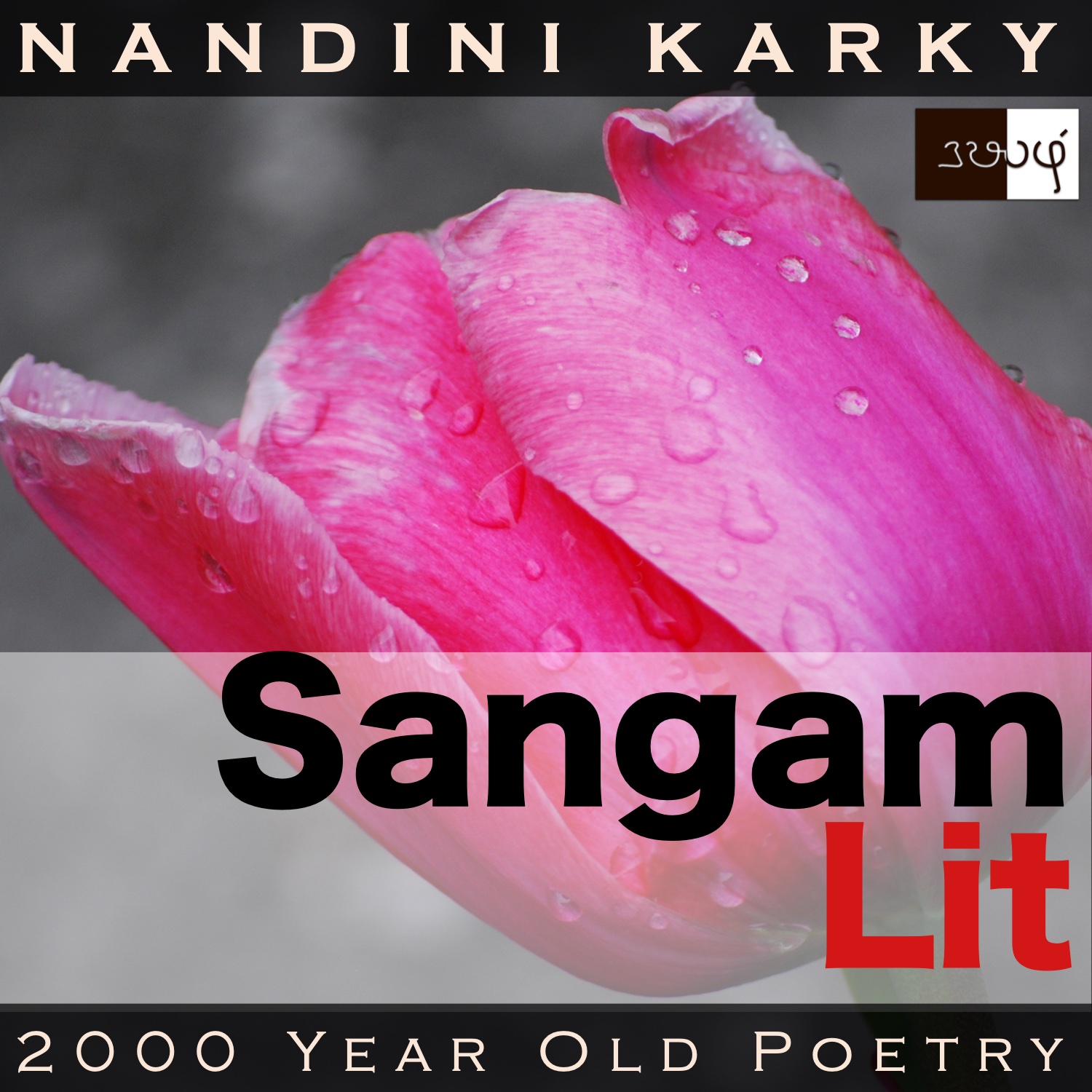Podcast: Play in new window | Download
Subscribe: Apple Podcasts | Spotify | Amazon Music | Android | iHeartRadio | TuneIn | RSS | More

In this episode, we perceive the struggle in a lady’s heart, as portrayed in Sangam Literary work, Kurunthogai 329, penned by Othalaanthaiyaar. The verse is situated in the drylands of ‘Paalai’ and speaks in the voice of the lady to the confidante, in response to the confidante’s words that the lady must bear better with the man’s parting.
கான இருப்பை வேனில் வெண் பூ
வளி பொரு நெடுஞ் சினை உகுத்தலின், ஆர் கழல்பு,
களிறு வழங்கு சிறு நெறி புதையத் தாஅம்
பிறங்குமலை அருஞ் சுரம் இறந்தவர்ப் படர்ந்து,
பயில் இருள் நடுநாள் துயில் அரிது ஆகி,
தெள் நீர் நிகர்மலர் புரையும்
நல் மலர் மழைக்கணிற்கு எளியவால், பனியே.
‘It’s not me, just my eyes’ says a voice in this verse. In the opening words ‘கான இருப்பை வேனில் வெண் பூ’ meaning ‘the dry forest Mahua tree’s white flowers in the summer’, we glimpse at an Indian tree, whose leaves, fruits and flowers have multiple uses, yet it’s famous for the alcoholic drink made from these flowers. From the little flower on the tree, we glance down to see ‘a little path where huge elephants walk on’ in ‘களிறு வழங்கு சிறு நெறி’. The parted and the place to which he parted away is revealed in ‘அருஞ் சுரம் இறந்தவர்’ meaning ‘the one who left to the drylands’. A picturesque sight greets us in ‘தெள் நீர் நிகர்மலர்’ meaning ‘a glowing flower in clear waters’. Ending with the words ‘எளியவால் பனியே’ meaning ‘easy is moisture’, the verse intrigues our curiosity.
What do elephant paths have to say about the lady’s life? The context reveals that the man and lady were leading a married life when the man parted away to gather wealth. The lady languishes in his absence and the confidante asks her to bear with the separation. To the confidante, the lady says, “White flowers of the ‘iruppai’ tree in the dry forest during summer, detach from twigs, as winds blow and fall from the tall branches, burying the small path that elephants tread on, in the inaccessible drylands surrounded by radiant mountains. Worrying about the one who parted away thither, even in the midnight hour that is soaked in darkness, sleep becomes unattainable and akin to a luminous flower that grows in clear waters, in my fine, flowerlike, rain-like eyes, easy it is, for tears to flow.” With these words, the lady blames her sleepless eyes for being unable to bear the separation with grace.
Time to explore the nuances. The lady starts by asking us to look up at a white flower dangling on the branch of a ‘Mahua’ tree. Just then, a hot summer wind blows and the flowers not being able to hold on any longer, fall to the ground. When we follow the fall of the flower, at the destination, we see that many of its siblings too are lying, so much that the entire path seems to be buried. She then reveals that this is the path that huge elephants walk on, in the drylands, to where the man left. Just because her mind keeps running in his direction, even in the pitch black hour of midnight, sleep turns its back to her, the lady says. Comparing her eyes to flowers that grow in plentiful waters, the lady concludes by saying tears seem so natural to them!
Through that statement, the lady is differentiating herself from her eyes and telling her confidante, indeed I’m trying to bear with the situation, whereas my eyes seem to have a mind of their own, forever being a home to tears! In many Sangam verses, we have seen how the protagonist differentiates some part of the body from themselves, as in the case of a man talking to his heart, or the lady saying that her heart had travelled away to where the man is. It sounds like an excellent coping mechanism through which there’s acute observation of what’s happening to the body, when in grief, and taking it a step further to see the part where pain expresses itself as different from the self. And so, within the fabric of Sangam poetry, threads of timeless therapy seem to flow seamlessly!




Share your thoughts...